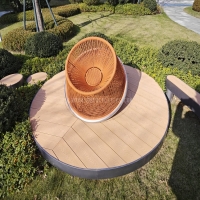Welcome to the website for landscape facilities products and knowledge.
How do landscape tables in waterfront locations resist saltwater corrosion?
Waterfront landscape tables are exposed to harsh saltwater environments, yet they manage to resist corrosion through a combination of advanced materials and protective techniques. Here’s how they achieve durability:
1. Marine-Grade Materials: High-quality stainless steel (e.g., 316 grade) and aluminum alloys are commonly used due to their inherent resistance to saltwater corrosion. These materials contain elements like chromium and molybdenum, which form a passive oxide layer to prevent rust.
2. Protective Coatings: Powder coatings or anodized finishes create an additional barrier against saltwater. These coatings are UV-resistant and tightly bonded to the metal, ensuring long-term protection.
3. Design Innovations: Elevated designs and drainage features prevent water pooling, reducing prolonged exposure to moisture. Non-metallic components, such as teak or synthetic polymers, are also used to minimize corrosion risks.
4. Regular Maintenance: Routine cleaning and reapplying protective sealants help extend the lifespan of waterfront tables by removing salt deposits and preventing degradation.
By integrating these strategies, waterfront landscape tables maintain their aesthetic and functional integrity even in challenging marine environments.
Related search:

Recommendation
Swivel chair-Specialty steel structure woven rattan leisure chair with rotatable design